Blades, flicks and freedom
Just when you’ve all but forgotten that there are things more important than your right to Netflix and freedom from waistlines, two new books pull you in and set you straight. Each of these pandemic publications gives us insight into both our psyche and politics this Freedom Month.
Is it a coincidence that Filipino movies — with all its high drama and low comedy — was “born as twin to the nation?” asks the book Philippine Cinema 1897-2020 by Gaspar A. Vibal and Dennis S. Villegas. Quoting film historian Nick Deocampo, this tome maintains, “Cinema mirrored events surrounding and shaping the destiny of the emerging nation-state.”
Filipino films leapt into being “barely two days after one of the most heartrending events to shake the Spanish colony — the execution of 35-year-old José Rizal, a beloved writer whose ideas and legacy would give birth to the Filipino nation.” (It’s no wonder his life and death are a staple on our screens.)
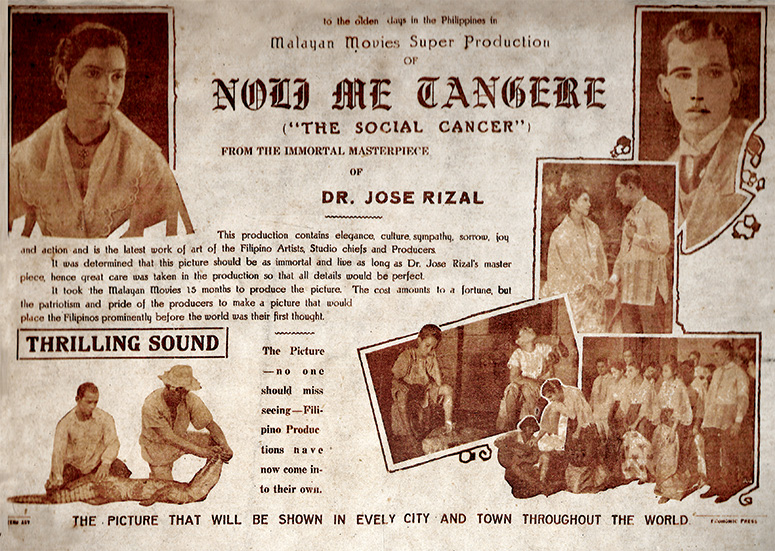
And so, on January 1, 1897, the Spanish immigrant Francisco Pertierra presented a motion-picture show entitled Espectaculo Cientifico de Pertierra in a darkened salon bearing his name on the Escolta. It was a sensation, despite the fact that the launch had been originally scheduled for Christmas Day 1896, but due to that very Manila circumstance called “malfunctions,” the premiere was delayed.
The Escolta in the twilight of the Spanish Empire was very much quality street, the place to find the latest French porcelain or crystal, as well as a first edition or a tin of foie gras. After all, the Philippines was far more Parisienne then Madrileña, as the ilustrados discovered that the principles of liberty, equality and fraternity suited them far better than the trials of the Spanish Inquisition.
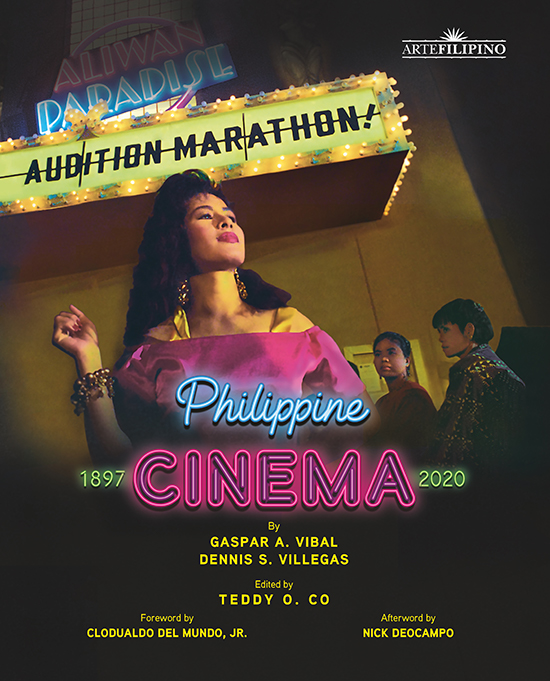
Pertierra is said to have discovered for himself in France the dark arts of the Lumiere brothers, the first purveyors of the first cinema cameras and projectors.
Films would soon be shot in the Philippines as well, including one immortalizing the Fiesta de Quiapo to keep up with the public’s appetites for the flickering shadows on the silver screen. (No doubt it captured the cinematic parade of the Black Nazarene.)
The very next year, General Emilio Aguinaldo proclaimed our Declaration of Independence, mistakenly invoking “the protection of the Powerful and Humanitarian Nation, the United States of America.” It would foreshadow Uncle Sam’s presence in the moro-moro world of our politics in one way or another.
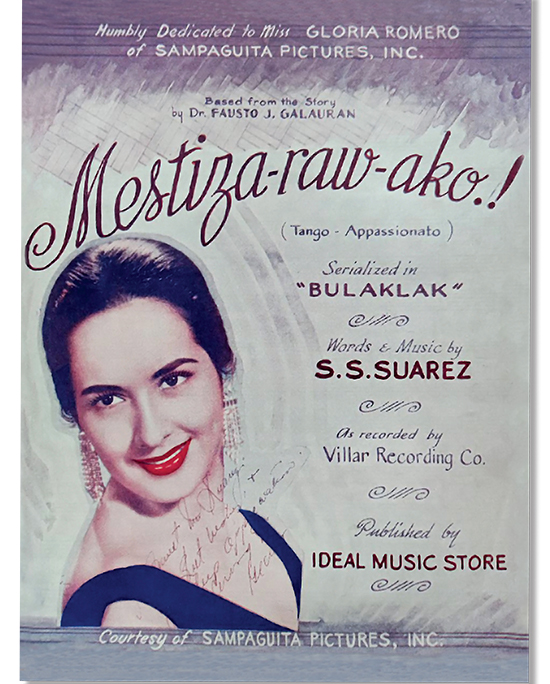
“During the ensuing Philippine-American War and the early years of American rule,” the book continues, “the colonizers utilized moving pictures as a tool of propaganda.”
In fact, Thomas Edison, the American genius who invented the light bulb and the phonograph, was also a pioneer of fake news. He created faux newsreels “in which Philippine battle scenes were recreated in New Jersey using black Americans as stand-ins for Filipinos.” Our fledgling republic didn’t stand a chance.
Edison, who was a master of public relations, announced the Yankee victory before it had become final, thanks to the titles of these fabricated films such as Filipinos Retreat from the Trenches, US Troops and Red Cross in the Trenches before Caloocan and The Advance of Kansas Volunteers at Caloocan.
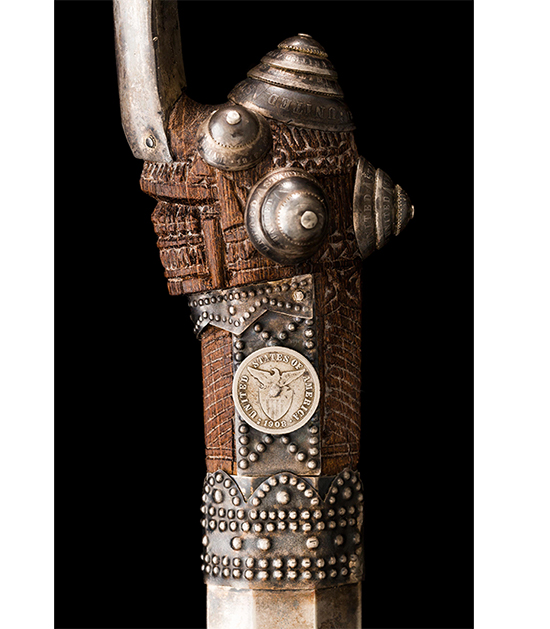
Worst of all was a film concocted by the American colonial official Dean Worcester, whose lifelong sole mission was “to convince the American public that the vast majority of Filipinos consisted of primitive tribes incapable of governing themselves.”
Once actual independence was gained in 1946, the Filipino Hollywood continued this mental colonization with a parade of fair-skinned matinee idols and leading ladies — a phenomenon we still see to this day in the tradition of a long mestiza line of “it” girls.
But movie-dom’s most indelible consequence was the breeding of politicians who capitalized on their film-star popularity. Rogelio de la Rosa, a professional dreamboat and hero of swashbuckling adventures (think Johnny Depp in Pirates of the Caribbean), would be one of the first senators voted into office by adoring fans. His sister Purita was the first wife of Diosdado Macapagal and at one time, he even considered running against his own brother-in-law. (In this case, that would be like marrying George Clooney’s Ocean’s 8 sister Sandra Bullock.)
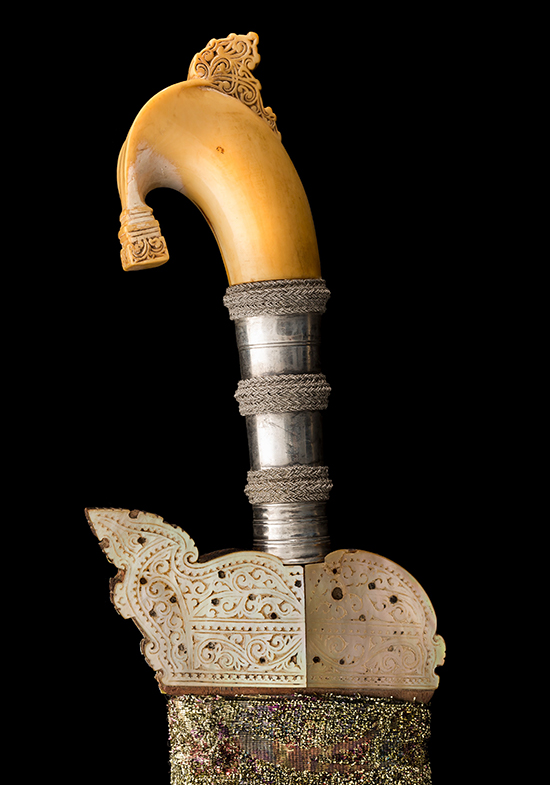
Soon to follow De La Rosa’s lead would be Lito Lapid, Tito Sotto, Bong Revilla, and the most successful of them all, “Erap” Estrada. But Ferdinand Marcos also learned a thing or two about exploiting the movies with a heady biopic titled Iginuhit ng Tadhana that would help catapult him to Malacañan.
Isko Moreno, Vico Sotto and Manny Pacquiao — who is as much a TV star as a boxing champion — are likewise expected to go on to equally great things.
The truth of the matter is that Pinoys are in love with both flicks and blades, as revealed in another lavishly produced book titled A Warrior’s Armament and Ornament. It features an all-star cast of writers led by top-drawer curators Corazon S. Alvina and Patrick D. Flores and is published by the Museo ng Kaalamang Katutubo (MusKKat).
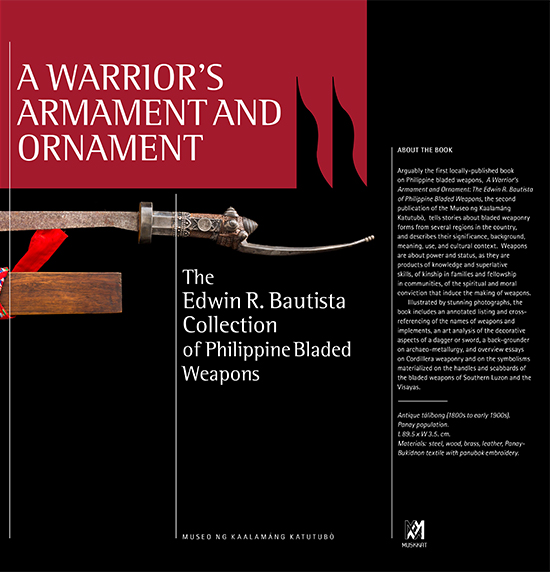
People who mistake the Filipino for Asia’s “Mr. Nice Guy” should be warned because the book casts the Filipino in the unexpected role of a talented, sword-wielding fighter.
While centuries of Spanish rule deprived him of the right to bear arms, specifically knives and daggers, the Philippines continued to be a thoroughly “blade culture” on the sly. Filipino ingenuity transformed harmless-looking sticks into the lethal arnis and created the camouflage of the discreetly hidden balisong or butterfly knife.
The skill of our fighting men (and women) has been immortalized in such American action pics as the Bourne Identity, where the hero deprived of weapons learns to fight like Filipinos with anything at hand that mimics swordplay.
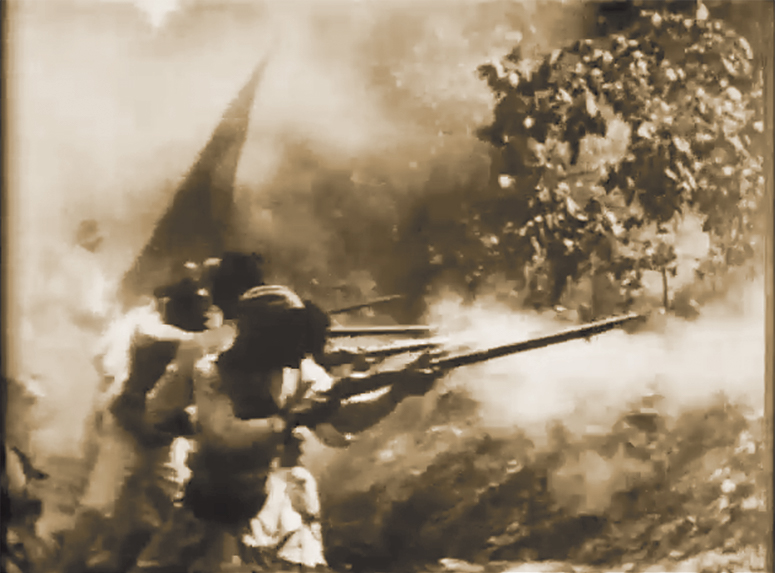
The greatest swords, from King Arthur’s Excalibur to the Muslim Zulfiqar, after all, have a tradition of giving their owners strength and courage — as well as victory.
This book covers 163 of these fascinating artifacts, including the tabak from Luzon, the talibong of Panay, and swords from parts north and south of the Philippines. These handsome weapons with poetically masculine names date from the 1800s and most probably earlier. They are all from the Edwin R. Bautista Collection of Bladed Weapons, which was amassed over several decades.
The entire assembly was donated by Mr. Bautista, who is the present president and CEO of Unionbank to the museum. It falls perfectly into MusKKat’s vision to engage and interact with Philippine knowledge or kaalaman, ancestral and contemporary, across time and language groups.
These two worlds of mythic fantasy and brave combat converge in the world of Ang Panday, in which Fernando Poe Jr. — our ex-future president — taps into these twin obsessions. FPJ brandishes his magic “balaraw” or dagger in an eternal celluloid clash between good and evil.
“It is a talismanic sword that transforms into a powerful weapon due to the hero’s purity of spirit and communality with God,” intones the Philippine Cinema book. Would that all of it be true for both blade runners and political contenders.
You may order the Philippine Cinema 1897-2020 book on shop.vibal.com/products/philippinecinema and A Warrior’s Ornament and Armament by sending a message to the FB page of MusKKat or email administrator@muskkat.org.



